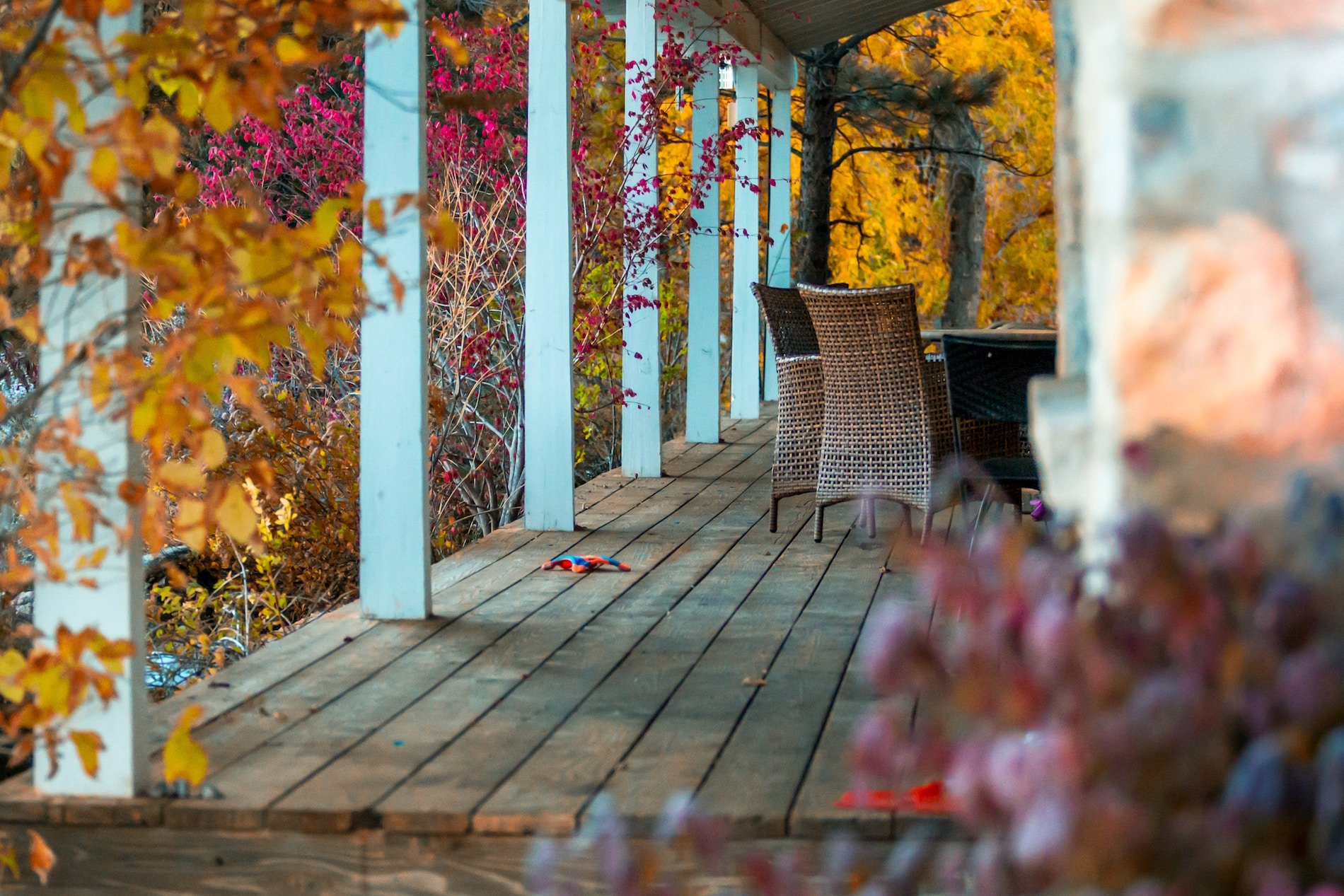Before the temps drop too much lower, it’s time to get some things done around your home to protect your investment, save on energy costs, and remain warm and cozy through the winter months.
1. Perform a home energy audit or hire a professional to do one.
Whether you prefer to do-it-yourself or leave it to the professionals, there are plenty of ways to conserve energy in your home that will save you money and make your home more comfortable.
2. Schedule a tune-up for your heating system.
Don’t wait until the coldest night to call your HVAC service tech when your heat goes out. A proactive check-up now might save you hundreds of dollars in service calls later, and an annual inspection of your heating system can help prevent carbon monoxide poisoning.
3. Install a carbon monoxide detector or change the batteries in your existing one.
Carbon Monoxide poisoning kills 400 Americans every year and sends 20,000 to the hospital, according to the CDC. Learn more about CO and how to prevent CO poisoning here.
4. Vacuum your baseboard heating units.
Dirty electric baseboard heaters aren’t only unsightly, they’re also inefficient. If your home has baseboard heaters, use a soft vacuum brush attachment to keep them looking fresh and working properly.
5. Order propane refill.
If your heat runs on propane and you aren’t set up for automatic delivery, it’s time to reorder when your gauge reads 30% or less.
6. Have your fireplace inspected, cleaned, and repaired to prevent chimney fires and carbon monoxide poisoning.
To prevent chimney fires, CO intrusion, and other chimney-related hazards, Chimney Safety Institute of America recommends having your chimney inspected annually by a certified technician. Learn about the three levels of chimney inspections here.
7. Use draft guards at window sills and exterior doors.
While a draft guard won’t sufficiently seal your home airtight, it’s better than doing nothing at all to keep the cold air out and hold the warm air in.
8. Open curtains during the day to let warmth in.
Thick curtains are great for protecting your house from heat loss during the night, but let the sunlight in during the day for a natural and free heat source!
9. Reverse your ceiling fan blades.
Operate your ceiling fan in a clockwise direction and run on a low speed in the winter to force warm air near the ceiling back down to the occupied space.
10. Install a programmable thermostat.
The EPA’s Energy Star program concluded that homes with programmable or smart thermostats can save up to $180 per year on heating and cooling, which is a sizable chunk of change. A smart thermostat such as Nest may be the preferable investment if you plan on being in your home for a while, however, the same savings can be achieved with a more affordable programmable thermostat.
11. Add extra quilts to your beds.
This one is from Grandma’s playbook. It’s a little obvious, but how often have you adjusted your thermostat instead of getting extra blankets out of storage?
12. Seal gaps with caulk and weather stripping.
You might be amazed at how much air travels through the cracks and gaps throughout your home. A little bit of caulk and new weather stripping can go a long way in winterizing your home. It also helps to keep pests out in the warmer months.
13. Insulate attic, garage door, unprotected water pipes, etc.
If your attic isn’t properly insulated, you’re probably paying a lot more than you should be to heat your home. Likewise, by insulating your garage door, you will keep the garage at a more moderate temperature, preventing cold air from entering the house every time the interior door is opened and closed. Wrapping your water pipes with foam will prevent them from freezing, which can cause extensive damage.
14. Change your HVAC filters monthly for best efficiency.
Don’t make your heating system work harder than it needs to. We’ve heard from several local professionals that it’s okay to buy the cheapest filters available; the key is to change them every 30 days no matter what type of filters you use!
15. Replace any problem windows with more efficient models.
Heat gain and heat loss through windows are responsible for 25%–30% of residential heating and cooling energy use, according to Energy.gov. If your windows are in good condition, there are more cost-effective steps you can take to improve their efficiency, but if it’s time to start thinking about replacing them, here’s what you should know first.
16. Change batteries in smoke detectors.
It’s recommended to change the batteries in smoke detectors once every 6 months (doing it around Daylight Savings makes it easy to remember). If any detectors are older than 10 years, it’s time to replace them.
17. Clean your carpets.
Clean your carpets before holiday guests arrive and enjoy the Fall weather with the windows open while they dry. This will also help to rid your home of germs before sickness hits!
18. Clean the air.
Prepare for spending more time indoors and clean the air throughout your home. Whole house air cleaners can also help extend the life of your HVAC equipment.
19. Quiet those squeaky doors.
Squeaky hinges driving you crazy? Hit them with a can of WD-40 before the cold weather makes them worse.
20. Power wash the exterior of your home.
Wash the exterior and windows of your home to prevent mold and mildew.
21. Waterproof any gaps in your home’s exterior.
Caulk where masonry meets siding, where pipes and wires enter the house, around windows and door frames, and at corner joints formed by siding, so water doesn’t find its way into the walls.
22. Touch up or add a fresh coat of paint or sealer.
Lower humidity makes Fall a great time to paint (as long as it isn’t below freezing yet). Touch up or add a fresh coat of exterior paint or sealer to protect from weather elements.
23. Caulk first.
If doing any interior painting, be sure to caulk before painting for a more finished look.
24. Inspect your roof and repair any leaks before Winter.
Cold weather can aggravate a small roof leak. Use binoculars to look for any missing, loose, or damaged shingles on the outside, and check your ceiling and attic for leaks inside. Then your best bet is to bring in the professionals to accurately assess the leak and fix any problems quickly and safely.
25. Keep the air flowing.
Make sure vents in the soffit, gables, and eaves aren’t blocked so that air can flow above the insulation. This will prevent moisture buildup and condensation in the Winter as well as overheating in the Summer.
26. Give your gutters some love.
Clean, repair, and protect your gutters to prevent blockages and keep water flowing away from your house instead of into it.
27. Extend downspouts at least 10′ from the house.
Water is one of the most damaging elements to any home. One of the simplest measures you can take to protect your home from water intrusion is to extend the downspouts at least 10-20 feet away from the foundation.
28. Inspect for unwanted guests.
Check the attic for any pests that may have found their way in to get warm. If you have a crawl space, you’ll want to check there too and make sure any vents are properly covered.
29. Repair driveway and sidewalk cracks.
Cold weather can aggravate cracks in concrete driveways and sidewalks and bigger cracks in the Spring can lead to injury if your guests aren’t careful where they step.
30. Move cold-sensitive items and plants indoors.
Many yard ornaments, outdoor lighting, and plants such as cacti can’t withstand below freezing temperatures. Bring them in before the first frost to avoid damage. Don’t forget to check the underside of any plant leaves for hitchhiking insects.
31. Winterize your outdoor faucets and sprinklers.
Drain and store hoses and winterize your outdoor faucets and sprinklers. You can pick up styrofoam faucet covers for around $3.00/each at most any hardware store.
32. Organize your garage.
Take advantage of these beautiful Fall days to organize the garage and make space for your car before the cold weather hits.
33. Wash away pollen and mildew.
Wash away pollen and mildew from your outdoor cushions and perform any annual maintenance that your outdoor furniture may need.
34. Clean lawn equipment.
Clean your lawn equipment before storing it for several months to prevent corrosion. It’s also a good idea to remove your lawn mower battery for the winter and store it in a cool, dry place.
35. Clean garden tools.
Good tools aren’t cheap, but if you treat them right they’ll last for years. Thoroughly clean all of your garden tools and store them on a rack to keep them from falling over.
36. Watch for deals on lawn equipment.
Keep an eye out for good deals on lawn and garden equipment for next year. There are likely to be some great discounts on outdoor items as we head into Winter.
37. Get your snow gear out of storage now.
Get your snow gear out of storage now, including a backup generator if you have one. Don’t wait until the coldest, snowiest days to run to the hardware store. They’ll likely be sold out then.
38. Change outdoor light bulbs.
Change outdoor light bulbs… you’ll want them working for these shorter days and longer nights!
39. Add lighting.
Consider adding lighting to your walkways to enhance your curb appeal. Plenty of outdoor lighting is also one of the best deterrents for burglary.
40. Plant a tree.
Rain helps trees and shrubs establish their root systems and cooler air encourages root growth without new top growth, so planting in the Fall results in a stronger, better developed root system in the Spring!
41. Divide or move perennials, remove dead annuals, and mulch hardy perennials.
While some perennials can withstand a cold winter, many cannot. Know which plants to cut back, divide, or remove altogether and consider mulching around your hardy perennials to insulate the soil during Winter.
42. Pot up some cool-loving plants such as pansies or violas.
43. Create fall containers.
Tuck fall combo favorites, such as flowering kale and mums, into containers to add color to porches and patios. Accent the containers with homegrown gourds and pumpkins.
44. Plant ahead for spring…and beyond.
Planting perennials in your fall garden will make for a more beautiful spring. See how to add these long-lived plants to your garden now.
45. Adjust your watering schedule.
Cooler temps mean your garden (and indoor plants) need less water. Adjust your irrigation schedule accordingly.
46. Trim dead branches out of trees.
Keep dead branches from falling out of trees in a Winter storm by proactively trimming them now.
47. Rake leaves to prevent lawn and gardens from suffocating.
Raking leaves is a matter of lawn health, not just tidiness. Depending on the size and quantity of leaves in your yard and the type of grass they’re covering, consider raking or mulching the leaves to let your grass breathe this Winter. As an alternative to raking, a lawnmower with a bagging attachment provides a fast and easy way to shred and collect the leaves.
48. Put raked leaves in a compost pile or use as mulch.
Once you’ve collected your leaves, add them to your compost pile or use them to mulch your Fall garden and flower beds.
49. Aerate your lawn and spread fertilizer and grass seed.
Unless your grass is healthy and thriving, aeration can help promote root growth in a struggling lawn. For cool-season grasses such as bluegrass, fescue, and ryegrass, it’s best to aerate during the growth periods in Spring and Fall.
50. Prep your firewood pile.
It’s best to store your firewood in an open shed or under a tarp to protect it from rain, and keep it at least 20 feet from the house and elevated to prevent pests from hitching a ride inside.




